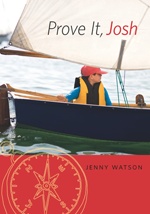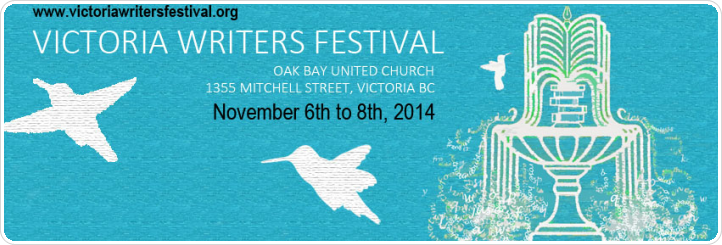 Thanks LISA MCMANUS for inviting me to be part of this writing process blog tour! The idea of this blog tour is to let you know a little bit of the why and how of my writing process, and to introduce you to some new writers you might not be familiar with yet.
Thanks LISA MCMANUS for inviting me to be part of this writing process blog tour! The idea of this blog tour is to let you know a little bit of the why and how of my writing process, and to introduce you to some new writers you might not be familiar with yet.
Lisa and I know each other through the Vancouver Island chapter of Romance Writers of America (RWA) and the Victoria Children’s Literature Roundtable. Lisa’s first young adult novel, Newbie Nick, is due to be released by Lycaon Press on June 18th—the ebook is actually available for pre-sale right now. You can read Lisa’s answers to the blog tour questions here.
Here are my answers to the questions about my writing process:
What are you working on?
 Currently I’m working on three different writing projects. One is another middle grade story featuring Josh and Dakota, in which they get up to all sorts of mischief as they try to clear Josh’s name when he is blamed for lighting a fire at the local mill. The second story is for a younger audience – I’m just in the early stages of that one, so there’s nothing much to tell just yet. And the third is a young adult novel – also in the very early stages. I’ve also signed up for an online photography class to spark my creativity (I hope!).
Currently I’m working on three different writing projects. One is another middle grade story featuring Josh and Dakota, in which they get up to all sorts of mischief as they try to clear Josh’s name when he is blamed for lighting a fire at the local mill. The second story is for a younger audience – I’m just in the early stages of that one, so there’s nothing much to tell just yet. And the third is a young adult novel – also in the very early stages. I’ve also signed up for an online photography class to spark my creativity (I hope!).
How does your work differ from others of its genre?
When Patrick and I were riding our tandem bicycle, him in front, me behind, he often used to joke that I was cycling with my eyes closed. We’d be riding along a back country road and he’d ask, “Didn’t you see that massive hole in the road? What about that heron standing in the field? Or that sailboat up on blocks?” It’s true—I hadn’t seen those things—which made me feel as if I were missing all the important stuff. Until I realized that I saw things he didn’t see. “Hey Patrick, did you see that bald eagle in the top of the tree? Did you see that picnic table – looks like a good place to stop? Did you see the mannequins standing in the window of that house?”
I think every writer has a unique way of seeing the world based on their childhood, place of birth, place of residence, family, work, hobbies, and experiences. It’s my unique view and the things I see that make my writing and my stories different.
Why do you write what you do?
The first book I remember reading as a kid that really fired up my imagination was Arthur Ransome’s Swallows and Amazons. The children in his books had so much freedom to play and explore away from adult supervision, with endless possibilities for adventure—I wanted that too, and still do! It’s that sense of wonder that I hope to inspire in the children who read my writing, and that glimpse of a different life that I hope will help them see the potential in their own lives.
How does your writing process work?
My process evolved out of years of working as a technical writer, which required a combination of a deadline, a word goal or page limit, an outline, and knowing my audience. Lots of experienced writers advise new writers to just get the story down and worry about word limits at a later stage, but that much freedom and flexibility didn’t help me as a new writer. I needed parameters to work within.
Based on publisher submission guidelines and published contemporary middle grade books, I set myself a word count and figure out how many words should be in a chapter. Then I set up my Word document (or, more recently, my Scrivener project) so that the page looks as close to a published page as possible. I know for some writers this would totally kill their creativity, but for me, it helps to see what the finished “product” will look like. And knowing how long a chapter should be, gives me an idea of how quickly the action should move the story forward. If I get to the end of a chapter and nothing much has happened, it’s pretty obvious I need to cut some of this non-action and pick up the pace.
In terms of the actual writing, I try to write every day, even if it’s just for 10 minutes. That way I’ve always got the story in mind, and even if some days I don’t come up with anything brilliant, I just have to be patient—eventually the ideas will come. I also like to have an outline so that I have a sense of the direction for the story. If I know where the story ends, I can work towards that point. Of course, that’s all in a perfect world. Sometimes writing is not so simple and I end up with hundreds of pieces, and have to put them together like a puzzle. Those days make me a bit crazy!
That’s pretty much it for me.
I’ve tagged two authors—Maggie Bolitho and Kay Stewart—to follow me on the blog tour next week, so be sure to look for their posts next Monday – June 16. I met Maggie at the Society for Children’s Book Writers and Illustrators (SCBWI) Canada West conference last year, and I met Kay when I volunteered for the Bloody Words conference in 2011.
 MAGGIE BOLITHO is curious by nature. She has been a soccer player, a horsewoman, a martial artist, a scuba diver, and a cyclist. Her many jobs have included waitress, florist, insurance underwriter, realtor, tax auditor, and accountant. Born in Victoria BC, Maggie has always been a devoted West Coaster. Except for the seven years she divided between Toronto and Edmonton and her twenty years in Australia. In Sydney she trained as a member of the CFU (Community Firefighting Unit). During this training, an interest in disaster scenarios was born.
MAGGIE BOLITHO is curious by nature. She has been a soccer player, a horsewoman, a martial artist, a scuba diver, and a cyclist. Her many jobs have included waitress, florist, insurance underwriter, realtor, tax auditor, and accountant. Born in Victoria BC, Maggie has always been a devoted West Coaster. Except for the seven years she divided between Toronto and Edmonton and her twenty years in Australia. In Sydney she trained as a member of the CFU (Community Firefighting Unit). During this training, an interest in disaster scenarios was born.
An ardent reader from an early age, Maggie didn’t start writing fiction (short stories) until 2002. One of her poems and some of her award-winning short stories have been published in Australia, the US, and Canada. From 2012 to 2014 she led the Young Writers’ Club of North Vancouver. In 2006, she switched to writing novels. In 2014 her debut novel, Lockdown, was released by Great Plains Publications. You can find out more about Maggie at www.maggiebolitho.com.
 KAY STEWART writes a police procedural series featuring RCMP Constable (now Corporal) Danutia Dranchuk, often in collaboration with her husband Chris Bullock: A Deadly Little List, Sitting Lady Sutra, and Unholy Rites. All are available as audio books, and the last two in ebook as well as print format. Kay has also published short stories, personal essays, and writing textbooks. You can find out more about Kay at www.kaystewart.ca.
KAY STEWART writes a police procedural series featuring RCMP Constable (now Corporal) Danutia Dranchuk, often in collaboration with her husband Chris Bullock: A Deadly Little List, Sitting Lady Sutra, and Unholy Rites. All are available as audio books, and the last two in ebook as well as print format. Kay has also published short stories, personal essays, and writing textbooks. You can find out more about Kay at www.kaystewart.ca.
If you’re curious to read about the writing process of other writers all over Canada, try a Google search for “writing process blog tour” or “writing process blog hop”. You’ll find all sorts of fun posts, and maybe discover some new writers to follow or books to read.
If you’ve got questions or thoughts about my writing process, feel free to leave a comment on this post!































